Related Research Articles
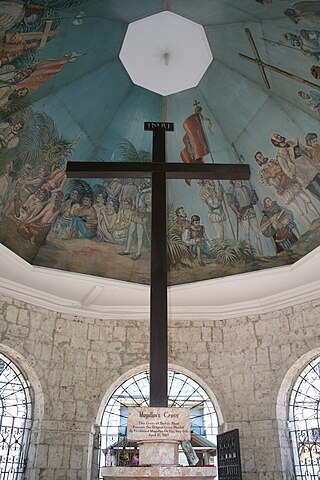
Cebu, officially the Province of Cebu, is a province of the Philippines located in the Central Visayas (Region VII) region, and consists of a main island and 167 surrounding islands and islets. Its capital and largest city is Cebu City, nicknamed "the Queen City of the South", the oldest city and first capital of the Philippines, which is politically independent from the provincial government.

The Battle of Mactan was a fierce clash fought in the archipelago of the Philippines on April 27, 1521. The warriors of Lapulapu, one of the Datus of Mactan, overpowered and defeated a Spanish force fighting for Rajah Humabon of Cebu under the command of Portuguese explorer Ferdinand Magellan, who was killed in the battle. The outcome of the battle resulted in the departure of the Spanish crew from the archipelago of the Philippines.

Cebu City, officially the City of Cebu, is a 1st class highly urbanized city in the Central Visayas region of the Philippines. It is the capital of the Cebu Province, where it is geographically located but is one of three cities that are administratively independent of the provincial government. According to the 2020 census, it has a population of 964,169 people, making it the sixth-most populated city in the nation and the most populous in the Visayas.

Mandaue, officially the City of Mandaue, is a 1st class highly urbanized city in the Central Visayas region of the Philippines. According to the 2020 census, it has a population of 364,116 people.
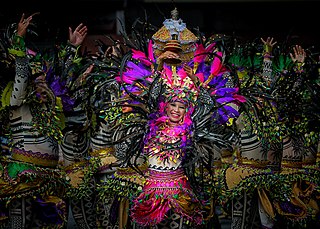
The Sinulog-Santo Niño Festival is an annual cultural and religious festival held on the third Sunday of January in Cebu City and is the centre of the Santo Niño Catholic Christian celebrations in the Philippines.

The Santo Niño de Cebú is a Roman Catholic title of the Child Jesus associated with a religious image of the Christ Child widely venerated as miraculous by Filipino Catholics. It is the oldest Christian artifact in the Philippines, originally a gift from the Spaniard Conquistador Ferdinand Magellan to Rajah Humabon and his wife and chief consort, Hara Humamay on account of their Christian baptism in 1521.

Metropolitan Cebu, or simply Metro Cebu,, is the main urban center of the province of Cebu in the Philippines. Metro Cebu is located along the central eastern portion of the island including the nearby island of Mactan. It accounts for 19.9 percent of the land area and 61.5 percent of the population of the entire province of Cebu.
Datu Daya was a legendary tribal chief in Kandaya, the place that is now known as Daanbantayan, Cebu, in the Philippines.

The Philippines is ranked as the 5th largest Christian-majority country on Earth in 2010, with about 93% of the population being adherents. As of 2019, it was the third largest Catholic country in the world and was one of two predominantly Catholic nations in Asia.
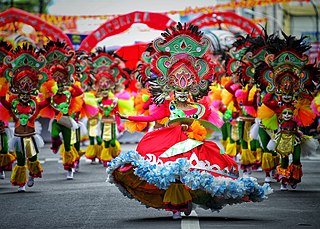
The MassKara Festival is an annual festival with highlights held every 4th Sunday of October in Bacolod, Philippines. The most recent festival was held last October 30, 2021. The festival sites include the Bacolod Public Plaza, the Lacson Tourism Strip and the Bacolod City Government Center.
Rajah Humabon, later baptized as Don Carlos, was a Malay Filipino who served as the Rajah of Cebu until his death in 1521. Humabon ruled at the time of the arrival of Portuguese-born Spanish explorer Ferdinand Magellan in the Philippines in 1521. Humabon, his wife, and his subjects were the first known Catholic converts in the Philippines.

Aliwan Fiesta is an annual event that gathers different cultural festivals of the Philippines in Star City Complex in Pasay wherein contingents compete in dance parade and float competitions. Organized by Manila Broadcasting Company (MBC) together with Cultural Center of the Philippines (CCP) and the cities of Manila and Pasay, the event is dubbed as "the Philippines' Grandest Fiesta," with prizes totaling P3 million. Aliwan Fiesta, which began in 2003, aims to showcase the different Filipino cultures and heritage not only to the people in Metro Manila but also to the rest of the world. The contingents, meanwhile, aim to promote their respective regions both economically and tourism-wise. It was originally organized as a visual extravaganza for the Christmas season, but it has since been held during the summer months of either April or May. Aliwan is a Tagalog word for "entertainment" or "amusement." Aliwan Fiesta festivities are covered live on DZRH News Television annually.
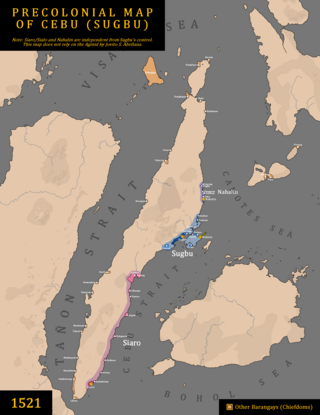
Cebu, or Sugbu, also called the Cebu Rajanate, was an Indianized raja (monarchical) mandala (polity) on the island of Cebu in the Philippines prior to the arrival of the Spanish conquistadors. It is known in ancient Chinese records as the nation of Sokbu (束務). According to Visayan oral legend, it was founded by Sri Lumay or Rajamuda Lumaya, a minor prince of the Tamil Chola dynasty. He was sent by the maharajah from India to establish a base for expeditionary forces, but he rebelled and established his own independent polity. The capital of the nation was Singhapala (சிங்கப்பூர்) which is Tamil-Sanskrit for "Lion City", the same rootwords with the modern city-state of Singapore.
The Coconut Festival is a week-long celebration in San Pablo, Laguna, Philippines, in honor of their patron Saint Paul the Hermit. It is held every first to second week of January. It is a celebration started in 1996. The festival consists of Street dancing, float parade, street concerts, nightly programs before the city fiesta and some other important events like the yearly "Mutya at Lakan ng San Pablo".
Numerous events and festivals are held annually in Metro Manila. They include:

The first documented Catholic Mass in the Philippines was held on March 31, 1521, Easter Sunday. It was conducted by Father Pedro de Valderrama of Ferdinand Magellan's expedition along the shores of what was referred to in the journals of Antonio Pigafetta as "Mazaua".

Singhapala was an ancient fortified city or a region, the capital of the Indianized Rajahnate of Cebu. The location of this ancient city is what is now the modern Barangay Mabolo in the northern district of Cebu City. Founded by Sri Lumay or Raja Muda Lumaya, a half-Tamil prince.
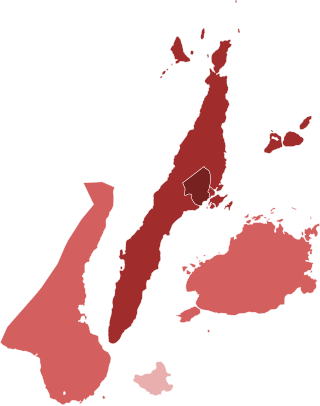
The COVID-19 pandemic in Central Visayas is part of the worldwide pandemic of coronavirus disease 2019 caused by severe acute respiratory syndrome coronavirus 2. The virus reached Central Visayas on February 5, 2020, when the first case of the disease was confirmed in Bohol. As of November 15, 2022, there have been 206,783 cases in Central Visayas with 6,416 deaths.
References
- ↑ "Other Landmarks". Tourism. The City of Mandaue. Archived from the original on 2008-03-14. Retrieved 2008-04-18.
- 1 2 "Mantawi... A Festival of History". Tourism. The City of Mandaue. Archived from the original on 2008-03-24. Retrieved 2008-04-18.
- ↑ Israel, Dale G. (2008-01-23). "Mandaue resets Mantawi festival to May 7 fiesta". Cebu Daily News. Inquirer. Retrieved 2008-04-18.
- ↑ "Cortes wants authenticity of Mantawi confirmed". Sun.Star Cebu. Sun.Star. 2008-01-23. Retrieved 2008-04-18.